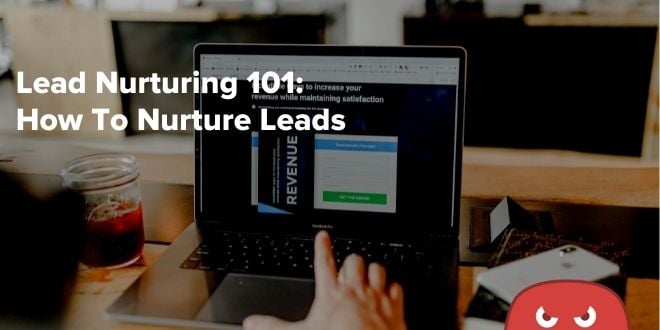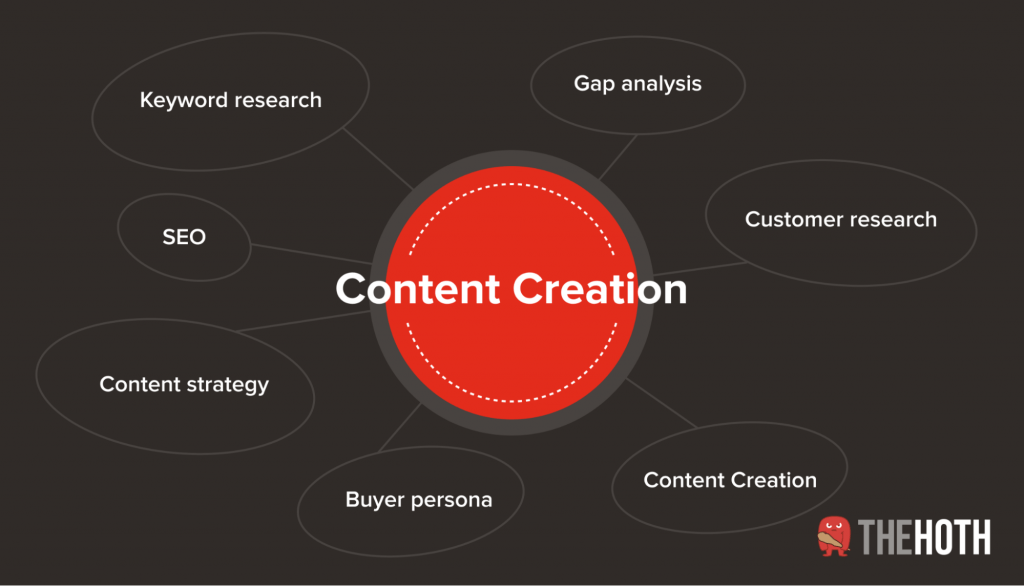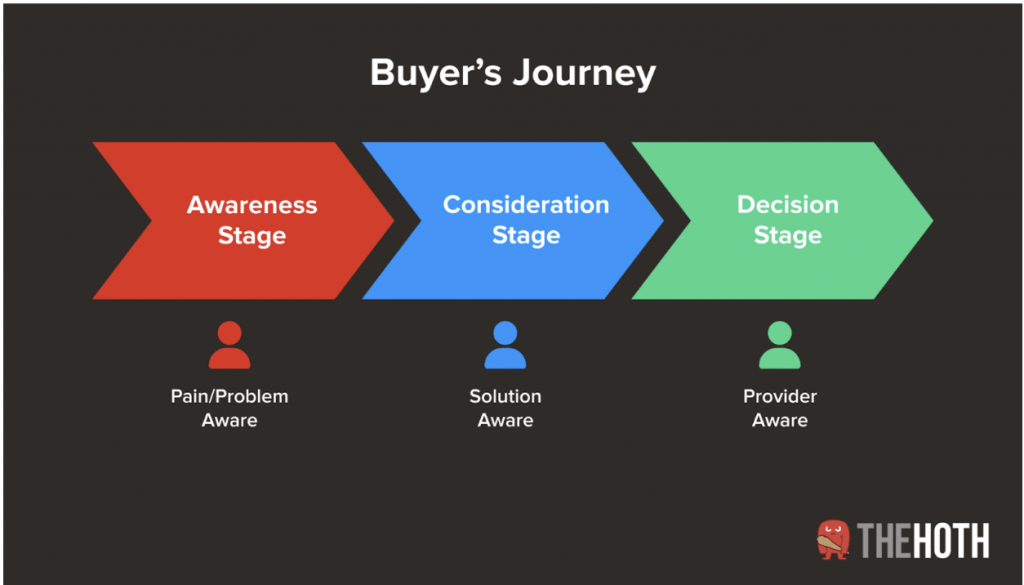Quick Links
Have you heard that nurtured leads make 47% larger purchases than non-nurtured leads and are wondering how to optimize your strategy?
Or maybe you’re frustrated that your old lead nurturing tactics don’t seem to hold up in 2022 and want to update ASAP… Wherever you’re at with your marketing strategy, we’ve got the cheat sheet for a fool-proof lead nurturing campaign.
Algorithms are constantly changing. In fact, experts estimate that Google alone updates its algorithms 500 to 600 times every year.
What’s more, people are constantly changing too, and the channels that they paid attention to last year may seem boring today.
So, it shouldn’t come as a surprise to know that the best lead nurturing strategy in 2022 isn’t the same as the best strategy in 2021. Staying on top of your leads means staying up to date with the most current lead nurturing tactics and trends. And lucky for you, this guide breaks it down into digestible and actionable steps.
Here’s what to expect:
- What is lead nurturing?
- The benefits of a good lead nurturing strategy
- Why content marketing is the ultimate way to nurture leads
- 7 steps to a successful lead nurturing campaign
- Our top 10 lead nurturing tactics
What is lead nurturing?
In its most basic sense:
Lead nurturing is the process of building relationships with your customers and adding value to your product, with the aim to increase the likelihood of a purchase.
But for further context, think of lead nurturing campaigns as breadcrumbs leading towards a purchase. Each breadcrumb serves to keep the lead interested, build trust and authority, and assure potential customers that you can solve their problem. This can take the form of several channels working together, with email, pop-up forms, and calls-to-action that are all presented to the customer at just the right time.
Think back to the fact we mentioned at the start of the article.
“Nurtured leads make 47% larger purchases than non-nurtured leads”.
When your marketing efforts generate a lead, it doesn’t mean that that lead is ready to click the checkout button and convert into a sale. Prospective buyers have questions, and lead nurturing is your opportunity to answer them and edge that lead through the buyer’s journey towards a decision.
The benefits of a good lead nurturing strategy
Before you start shaping your lead nurturing campaign, it’s important to bear in mind the potential benefits that could be waiting for you on the other side.
A well-executed lead nurturing strategy can expect to benefit from:
- Leads that are 50% more sales-ready at a 33% lower cost.
- A 47% higher average order value.
- A 60 to 70% chance of converting repeat customers.
On top of that, it helps to further establish your brand’s authority in your industry. Consistently pushing out valuable content positions you as a thought leader, and consequently someone that customers are more likely to trust to solve their problem.
When a customer sees you as an authority in your industry, you’re more likely to be at the top of mind for opinions and recommendations.
And with this study from Google finding that consumers are doing more research before purchases, using your marketing campaigns to position yourself as a brand authority will prevent you losing out to a competitor.
Oh, and there’s the small fact that only 35% of B2B marketers are currently implementing a lead nurturing strategy – giving you an immediate advantage.
Why content marketing is the ultimate way to nurture leads
A significant part of nurturing leads is assuring them that you have the solution they need to successfully achieve their goals. And when it comes to building trust and authority, there’s no better solution than content marketing.
Content creation places your brand in front of potential customers in a way that doesn’t feel forced. It’s not pushing a hard sale for your products and services, it’s providing them with genuinely valuable and useful information for free. The trust this instills in your authority makes conversion much easier down the line.
Furthermore, content also promotes lasting relationships based on meaningful communications, which can prove more valuable in the long term than the immediate one-time sales from traditional ads.
Content marketing, in many of its forms, comes into play at each and every part of a good lead nurturing campaign’s sale’s funnel. Keep reading to find out how to further incorporate content marketing and optimize your lead nurturing strategy for success.
7 steps to a successful lead nurturing campaign
Now that we’re up to speed on why a lead nurturing strategy should be a key factor in your digital marketing efforts, you’re probably wondering how to get started.
Lead nurturing is a lengthy process that requires consistent effort. However, with these steps we hope to make building a successful lead nurturing campaign as comprehensible and attainable as possible.
1. Use multiple channels (including social media and email marketing)
A core pillar of lead nurturing strategies is to make sure you place the right content and CTAs in front of your prospective customers at exactly the right times.
In the past, lead nurturing campaigns have relied almost exclusively on an email drip campaign alone. But today, with spam filters, changing data protection laws, and a general disinterest for blatant sales emails, it’s just getting harder and harder to nurture your leads via a few emails.
Not only does this mean you have to get smarter with your email marketing (stay tuned for more tips on this later in the article!), but also taking your lead nurturing campaign to multiple channels. When you are pushing out tailored digital marketing materials across email, social media (from TikTok to LinkedIn), and even SMS, there’s more chance that you will catch the attention of your audience – while strengthening brand awareness and authority in the process.
2. Get the help of marketing automation
Lead nurturing can be both repetitive and overwhelming.
First, you have to send out emails, social media posts, and website actions that consistently nudge your leads through the warmer and warmer ends of the buyer’s journey.
Second, you have to organize the campaigns to work together in synergy, appearing to the prospect at just the right time.
Luckily, this makes lead nurturing campaigns the perfect candidate for marketing automation.
Marketing automation takes into account every aspect of a buyer’s persona, including what they interact with. It then compiles this data for every one of your individual leads to know exactly the kind of solutions and media that specific lead will react best to.
In short, marketing automation understands your leads more than you will ever have the time to – so it makes sense to include it in your lead nurturing strategy from day one.
3. Follow up with your leads immediately
It may sound obvious, but not enough companies pay attention to it…
The quicker you follow up with your leads, the hotter they are.
This tactic borrowed from sales reps can be suitable for both B2C and B2B leads, depending on the nature of your business.
If you’re looking for an easy way to sweep up the low-hanging sales-ready leads before assessing the remaining leads that need to be nurtured with a targeted campaign, don’t underestimate the power of a timely follow-up email or phone call.
Unlike cold outreach, quick follow-ups are more likely to catch the prospect at a time where they are considering investing in a product or service like yours.
4. Get personal by segmenting your email list
Earlier we defined lead nurturing as relationship building, and how can you expect to grow a relationship without making personal connections?
Segmenting your email list is a key step towards sending your leads hyper-personalized emails that help them feel heard and understood.
One popular method for segmenting an email list is to create lists of leads based on the products they were browsing when they signed up for your emails. This way, you know that you are sending them further information, deals, and CTAs based on products they are actually interested in.
5. Use lead scoring
If you’re new to the concept of lead scoring, think of it as a way to prioritize your prospects, identifying the quality leads so that you waste less time and resources.
Lead scoring ranks all of your leads based on how valuable they may be to your business, usually based on their browsing behavior, interactions with social media, and conversions. The lead score can then be interpreted to let you know which leads are ready for a prompt sales follow-up, and which need to be nurtured for longer.
6. Retargeting
A Retargeting strategy can often play a large part in a marketing teams’ lead generation budget, mostly due to its substantial use of paid ads.
Retargeting is when a customer leaves your website, and is then shown an advertisement for your site on another website or on social media. It serves to remind the prospect of the products they were looking at, and hopefully nudge them back to your site and towards a decision.
7. Consider the buyer’s journey
When you consider the traditional sales funnel, marketing leads usually are positioned at the top of the sales funnel and the sales leads appear further down.
Digital marketing often segregates marketing from sales, however aligning the two in the buyer’s journey is a necessary part of both keeping a lead warm and ensuring it is sale-ready.
In terms of your workflow, this may mean identifying the key moments in the buyer’s journey where the lead changes hands between the marketing team and the sales team. Then setting shared goals and expectations across both teams.
Our top lead nurturing tactics
Now that we’ve covered the steps involved in establishing a successful lead nurturing campaign, it’s only right that we include some helpful tips that will help you truly excel in your nurturing efforts.
Personalize emails, ads, and social media
When it comes to inbound marketing, personalization is a vastly valuable tool. When you speak directly to a prospective customer, addressing details like their name, their interests, and location, it makes them feel more like a person and less like a number. In fact, recent data has shown that email campaigns with a personalized subject line have an increased your open rate of 50%
You can do this in your email communications, whether that be in your newsletters, announcements, or follow-up emails.
And you can also add personal touches via your targeted messages on social media, retargeted ads, and strategic content on your website. All of which helps to build trust with prospects and set you apart from competitors.
Craft valuable content
Just as personalized communications help to build trust between you and your prospects, the more finely-tuned your content is to individual customers and their needs – the more you’ll see your sales rate increase.
You can do this by using data gathered through your marketing automation, segmented email list, or simply buyer personas. Crafting relevant content designed around their pain points, burning questions, needs, and demands. You can also target certain demographics on your email list with a specific tone of voice and length of content that best suits them.
No, we don’t mean giving away your product for free! But, it’s important to note that lead nurturing can be a long process that requires patience and endurance, and providing prospective customers with a little bit of value for free can result in a big pay off. 
A freebie like an eBook, video content, infographics, consultations, or research can all go some way to help your customer achieve their desired goal. Consequently, customers are aware that you do in fact have the answer to their problems, and further value is added to your products. Furthermore, the fact that you are willing to give away some of your valuable expertise for free only further solidifies their trust in your authority.
Know where to put your calls-to-action
In any piece of content, whether that be on your website, webinars, a social media post, or in an email, calls-to-action serve to catch your customer’s attention with something you offer that they might be looking for. So, make sure you’re not leaving them out of your lead nurturing campaigns!
Calls-to-action should appear throughout your blog posts, social media posts, videos, captions and stories, demos, landing pages, emails – or just anywhere that you are touching base with a customer!
Use surveys to pre-qualify leads
Surveys can make for a useful tactic for new leads at the start of the buyer’s journey, helping you to customize lead nurturing and personalize communications. Just make sure that you only approach the prospect with relevant questions that allude to value rather than a hard pitch of your product. Then be certain that your follow-up actions fully reflect their answers.
This also means knowing what to do with the leads that come your way – based on their survey answers. For instance, if a lead lands on your website organically and answers the survey to say they are visiting “for research”, you should know that it is not an appropriate time to invite them to a product demo. Instead, consider inviting them to join your mailing list to get notified about future announcements and offers.
In summary
When it comes to the lead nurturing process, the main thing to remember is that no one lead is the same. Every human has different needs, interests, browsing preferences, and behaviors. And as a consequence, every lead comes with a different requirement and budget in order to convert it into paying customers.
In 2022, lead nurturing is a multi-levelled process that requires an omnichannel presence. Your content marketing efforts need to meet the prospect at every step of their buying journey, and find them at every platform that they frequently check. Which is why marketing automation has become such a popular and effective solution for the sales cycle, with its deep understanding of personas, data, and characteristics.
Summary of effective lead nurturing tactics
To wrap up, let’s recap the main points presented in this article.
- Multi-channel targeting is essential.
It’s getting harder to convert leads by email marketing alone. Strive to meet customers in other areas of the internet that they like to browse and interact.
- Marketing automation understands your leads more than you have time to.
No team of marketers or salespeople have the time to pin down a persona for every lead on your list – but the AI involved in marketing automation does!
- Personalize as much of your content and communications as possible.
Personalization has long been a buzzword for nurturing emails, but it can extend as far as social media, retargeted ads, and strategic website content.
- Use lead scoring to identify qualified leads and structure your workflow.
Lead scoring helps you identify the leads that are ready for a follow-up and those that will require a targeted nurturing campaign.
- Understand that lead nurturing requires you to align sales and marketing in the buyer’s journey.
Despite marketing and sales having different approaches to converting and making sales, they are both required to work in synergy throughout a successful lead nurturing process.
Interested in learning more about lead nurturing, or driving in new traffic to get some leads to nurture? Give us a call. We’re here to help.










